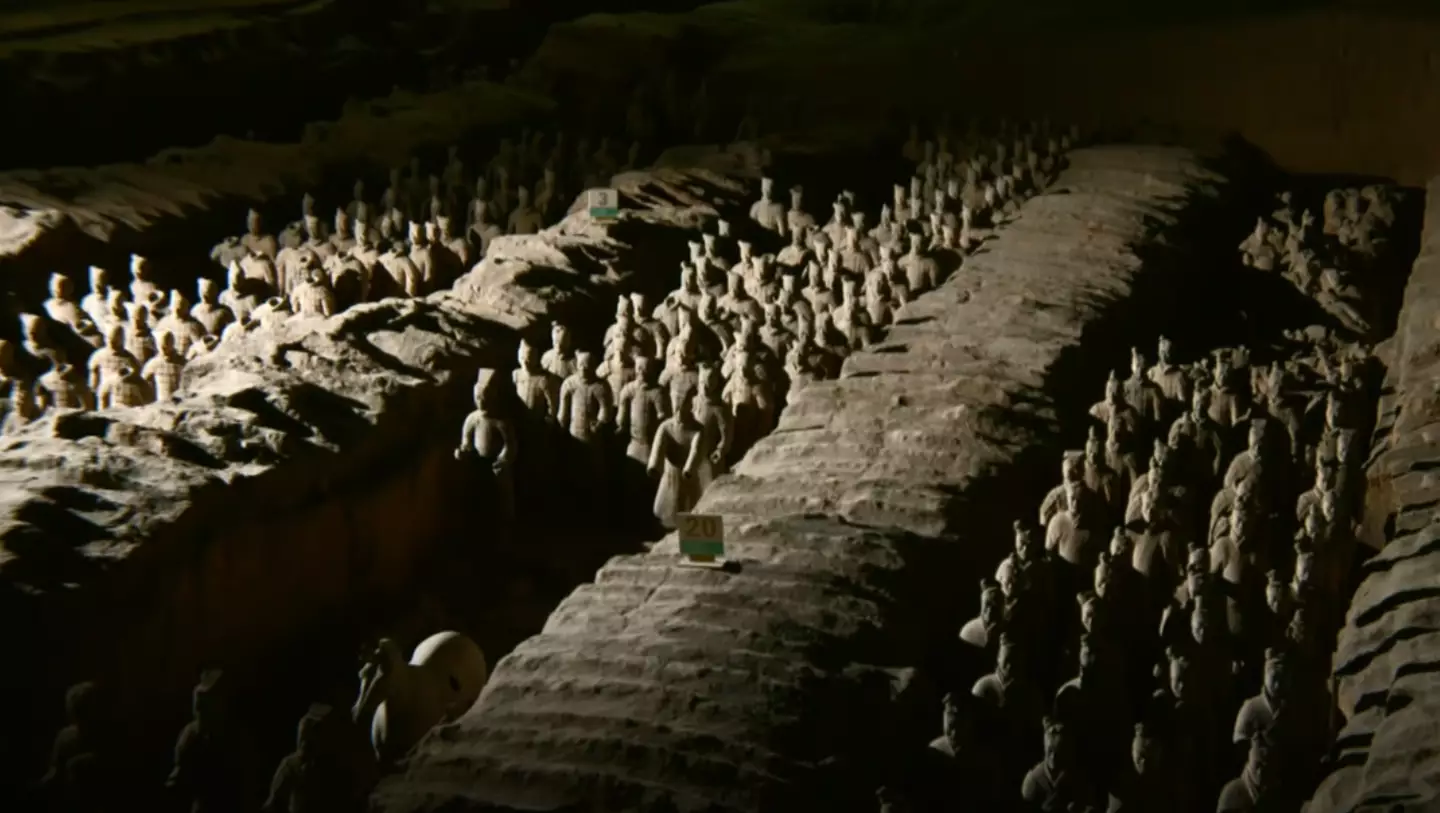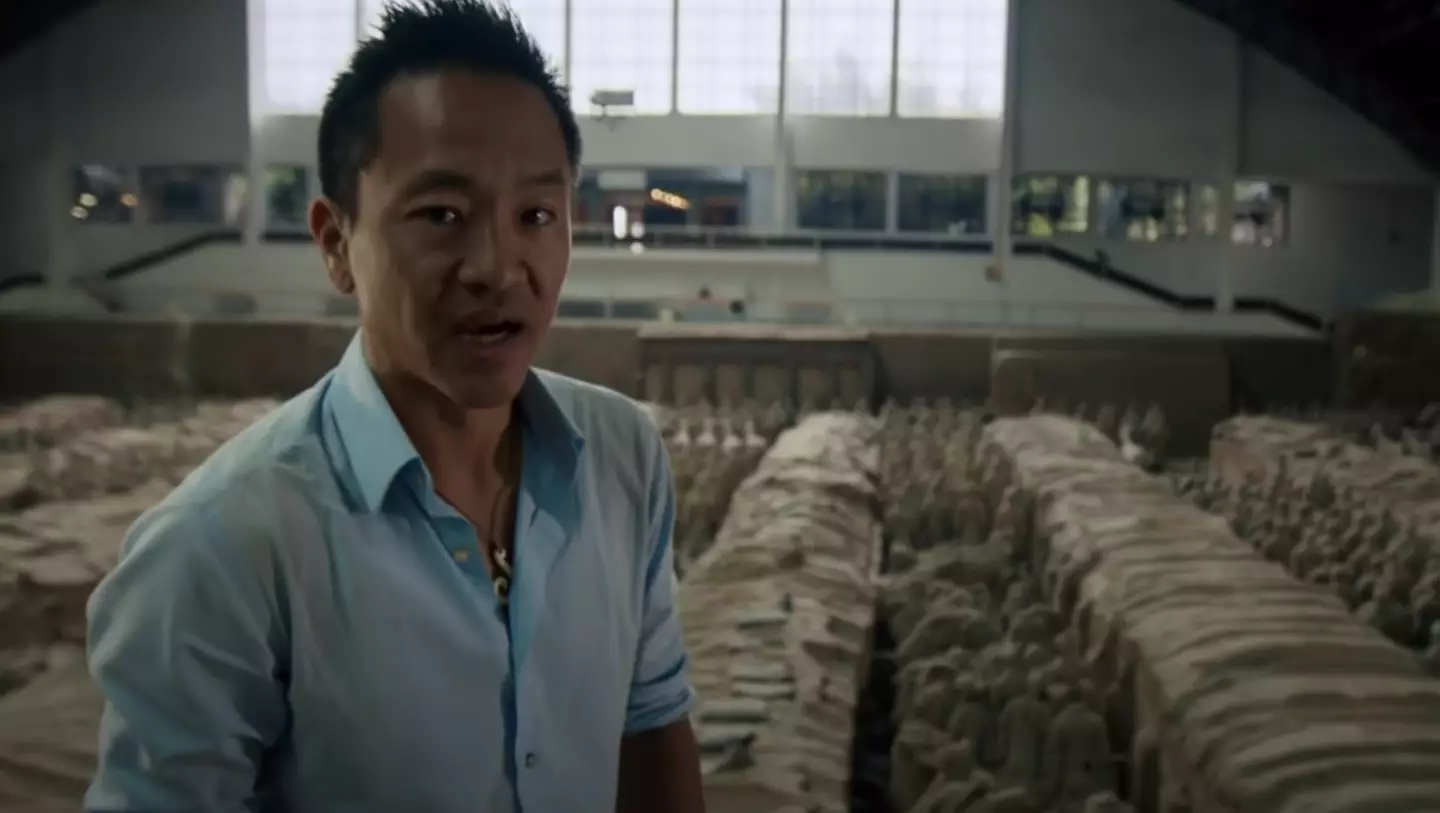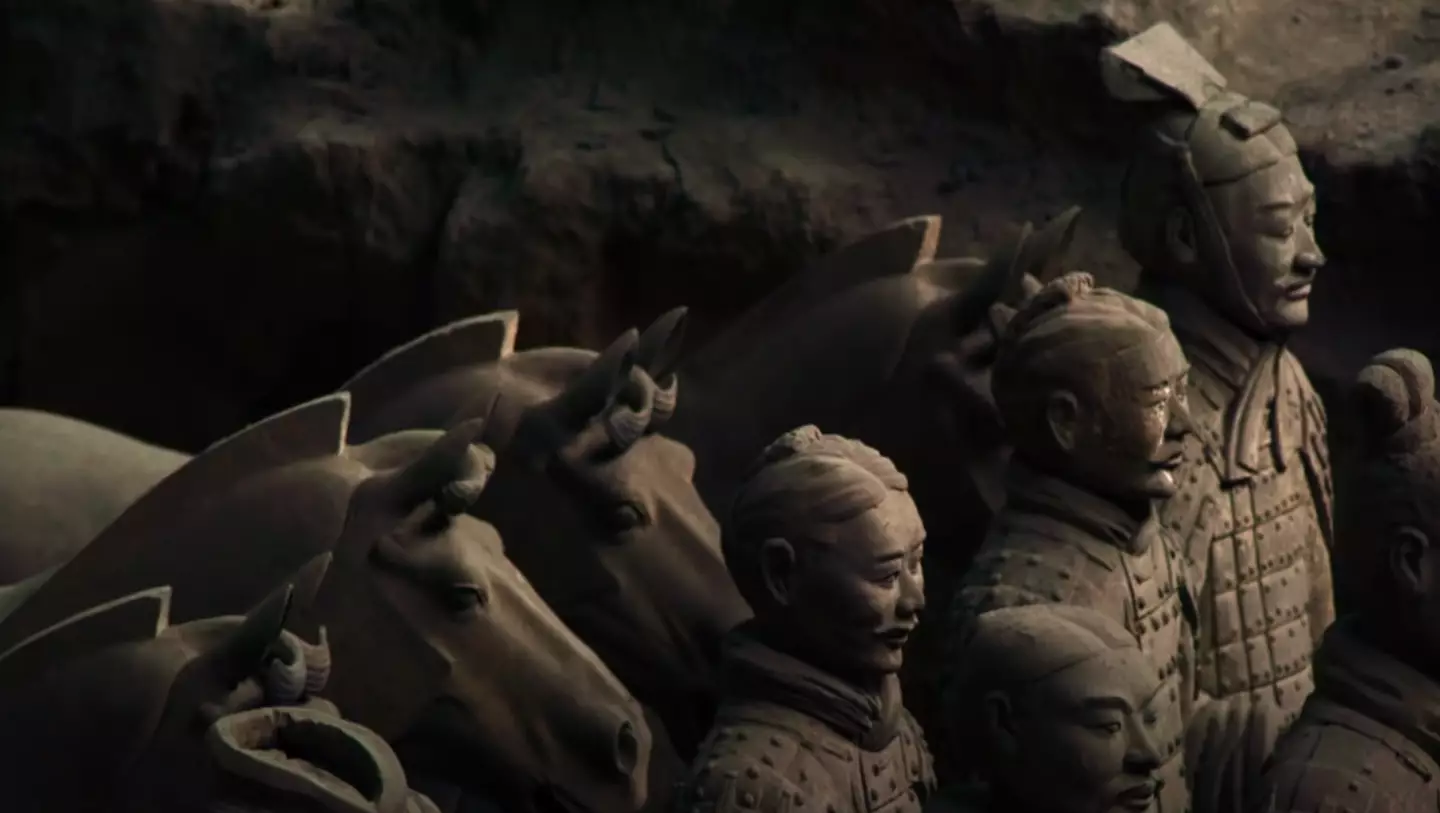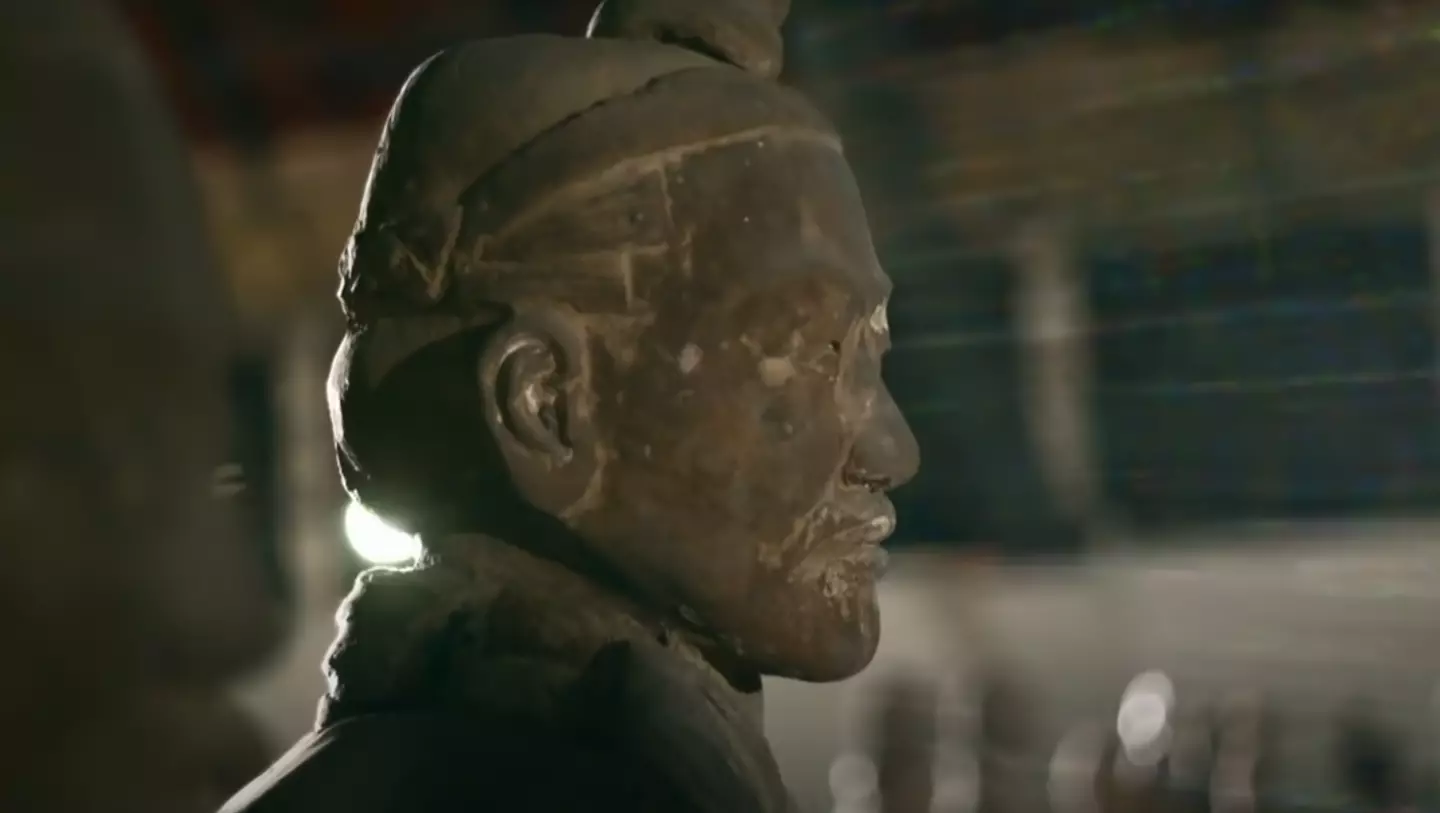
Archaeologists have to tread with caution when it comes to the tomb of China’s first emperor, but one explorer once had the 'incredible’ honour of getting up close to the famous Terracotta Army.
The tomb complex of Qin Xi Huang is known the world over as one of the most important archaeological discoveries ever.
He had built an elaborate city-sized compound to provide everything he would need for his afterlife – including his very own Terracotta Army, a collection of clay soldiers designed to protect him after he died aged 49 in 210 BC.
Advert
The army seem to be doing their job, too, as there’s one chamber within the tomb complex that remains unopened: the one containing the tomb and sarcophagus of the emperor himself.
Archaeologists are delaying opening the tomb, although it’s not got anything to do with curses – more so just good, old-fashioned science.

When the complex was first excavated the complex, the clay soldiers were painted in rich colours, and weren't the plain terracotta figures we are familiar with today. However, the very sudden change in the atmosphere meant that paint on the figures began to peel off, and now most are completely bare.
Advert
As such, there’s a concern that opening the imperial chamber could have the same effect on anything in there.
Another reason is that authorities are waiting for further advancements in archaeological science and technology, which they believe could allow us to gain as much insight as possible, or even preserve the chamber, before opening it.
Kristin Romey, a curatorial consultant for the Terracotta Warrior exhibition at New York City’s Discovery Times Square, told Live Science: "The big hill, where the emperor is buried — nobody's been in there.
"Partly it's out of respect for the elders, but they also realize that nobody in the world right now has the technology to properly go in and excavate it."
Advert

But while experts have to remain cautious about how they proceed with some areas, one explorer was once able to have a rare meeting with the emperor’s Army – an experience he said was ‘incredible’.
In a video shared six years ago, National Geographic’s Albert Lin explained: “This is the Terracotta Army - 8,000 warriors buried over 2,000 years ago – one of the greatest wonders of the world.

Advert

"This is the first emperor's army. He ordered his real army to be recreated in clay and buried with him, ready to fight his battles in the afterlife.
“Each face is individual and unique. Look at the scale of this place – tells you a lot about the guy, his ego, his vision for his afterlife.”
Taking it in, he went on: “What an experience.”
Advert
Lin said the warriors he could see were clearly ‘set for battle – exactly like the emperor’s real army’, with light infantry at the front, then heavy infantry and even cavalry at the rear, along with 520 life-sized horses.
He added: “It’s a really incredible feeling to be here. Standing in a place where nobody really gets access.
“I mean, we’re at the centre, at the heart, of this unbelievable World Heritage Site, which is, in a lot of ways, a symbol of my own cultural heritage, my ancestry.”
Topics: World News, Travel